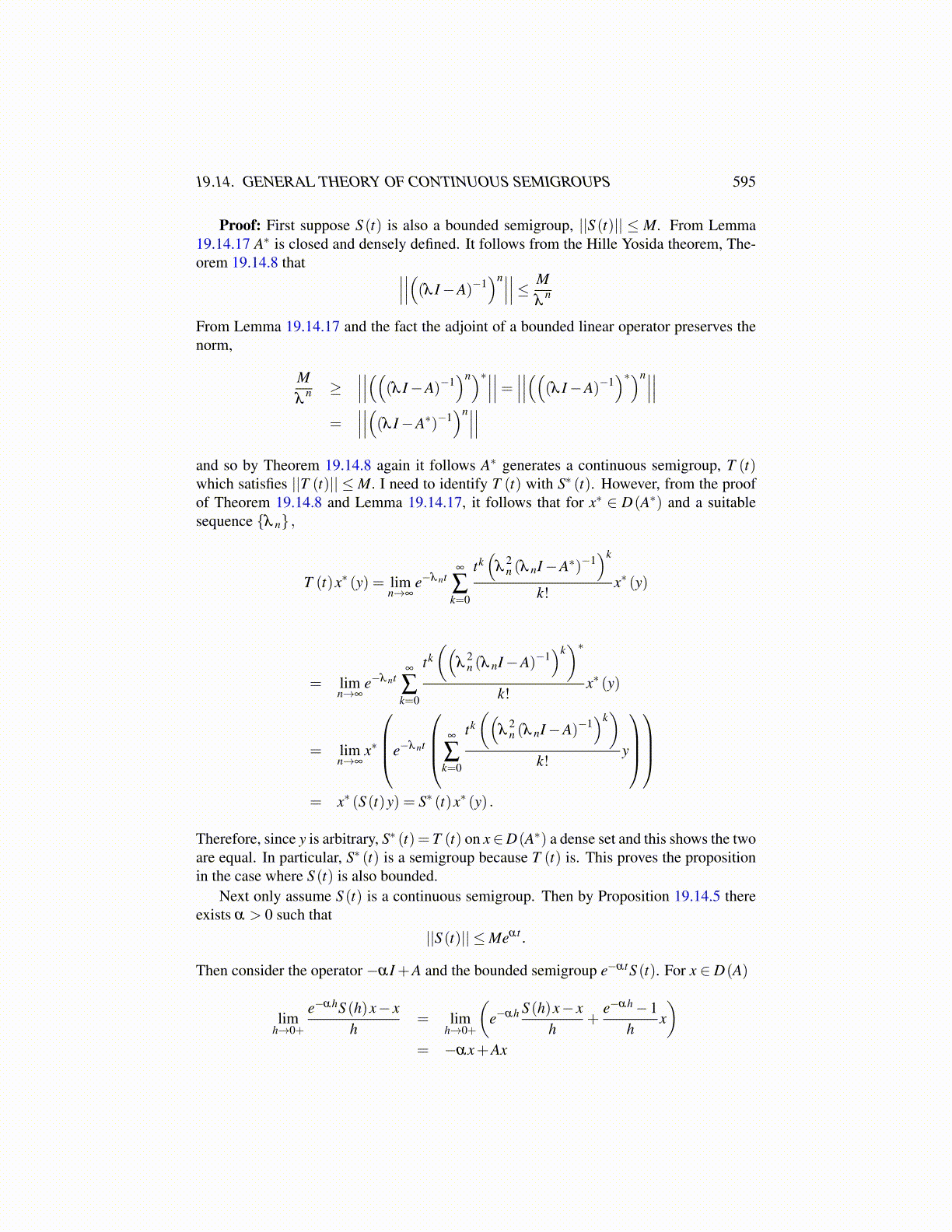
19.14. GENERAL THEORY OF CONTINUOUS SEMIGROUPS 595
Proof: First suppose S (t) is also a bounded semigroup, ||S (t)|| ≤ M. From Lemma19.14.17 A∗ is closed and densely defined. It follows from the Hille Yosida theorem, The-orem 19.14.8 that ∣∣∣∣∣∣((λ I−A)−1
)n∣∣∣∣∣∣≤ Mλ
n
From Lemma 19.14.17 and the fact the adjoint of a bounded linear operator preserves thenorm,
Mλ
n ≥∣∣∣∣∣∣(((λ I−A)−1
)n)∗∣∣∣∣∣∣= ∣∣∣∣∣∣(((λ I−A)−1)∗)n∣∣∣∣∣∣
=∣∣∣∣∣∣((λ I−A∗)−1
)n∣∣∣∣∣∣and so by Theorem 19.14.8 again it follows A∗ generates a continuous semigroup, T (t)which satisfies ||T (t)|| ≤M. I need to identify T (t) with S∗ (t). However, from the proofof Theorem 19.14.8 and Lemma 19.14.17, it follows that for x∗ ∈ D(A∗) and a suitablesequence {λ n} ,
T (t)x∗ (y) = limn→∞
e−λ nt∞
∑k=0
tk(
λ2n (λ nI−A∗)−1
)k
k!x∗ (y)
= limn→∞
e−λ nt∞
∑k=0
tk((
λ2n (λ nI−A)−1
)k)∗
k!x∗ (y)
= limn→∞
x∗
e−λ nt
∞
∑k=0
tk((
λ2n (λ nI−A)−1
)k)
k!y
= x∗ (S (t)y) = S∗ (t)x∗ (y) .
Therefore, since y is arbitrary, S∗ (t)= T (t) on x∈D(A∗) a dense set and this shows the twoare equal. In particular, S∗ (t) is a semigroup because T (t) is. This proves the propositionin the case where S (t) is also bounded.
Next only assume S (t) is a continuous semigroup. Then by Proposition 19.14.5 thereexists α > 0 such that
||S (t)|| ≤Meαt .
Then consider the operator −αI +A and the bounded semigroup e−αtS (t). For x ∈ D(A)
limh→0+
e−αhS (h)x− xh
= limh→0+
(e−αh S (h)x− x
h+
e−αh−1h
x)
= −αx+Ax